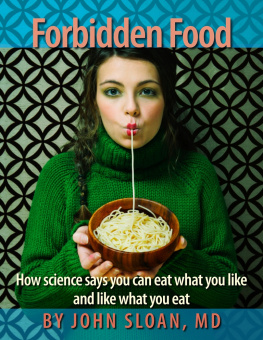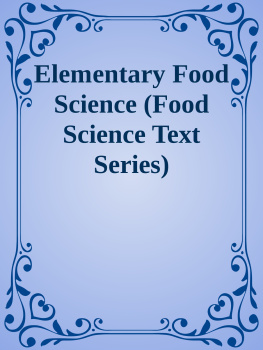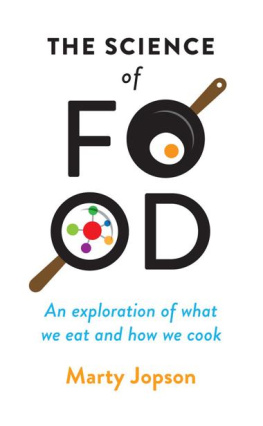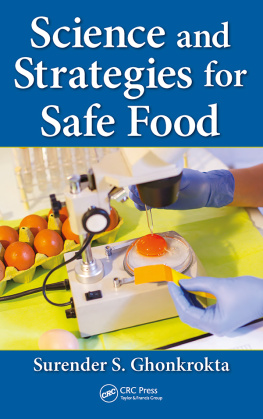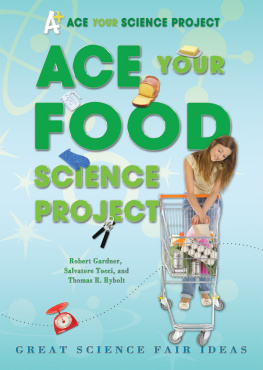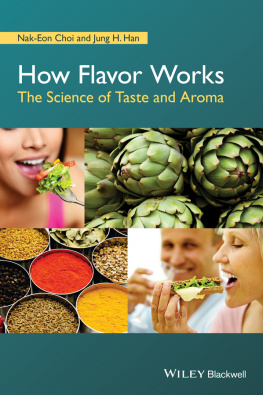Molecules, Microbes, and Meals

Oxford University Press is a department of the University of Oxford. It furthers the Universitys objective of excellence in research, scholarship, and education by publishing worldwide. Oxford is a registered trade mark of Oxford University Press in the UK and certain other countries.
Published in the United States of America by Oxford University Press
198 Madison Avenue, New York, NY 10016, United States of America.
Oxford University Press 2019
All rights reserved. No part of this publication may be reproduced, stored in a retrieval system, or transmitted, in any form or by any means, without the prior permission in writing of Oxford University Press, or as expressly permitted by law, by license, or under terms agreed with the appropriate reproduction rights organization. Inquiries concerning reproduction outside the scope of the above should be sent to the Rights Department, Oxford University Press, at the address above.
You must not circulate this work in any other form and you must impose this same condition on any acquirer.
CIP data is on file at the Library of Congress
ISBN 9780190687694
eISBN 9780190687717
For my family, near and far.
With art direction and food photography by Bran French, and microscopy images from colleagues in University College Cork.
{ Contents }
One of the themes of this book has been how every food product or meal has a huge and often underappreciated amount going on behind the scenes to make it what it is. The creation of this book has been just like this, and there are many individuals without whose support it would not have been possible, and whose contributions have ensured that the outcome is as palatable and pleasurable as I hope you will find it to be.
First, I wish to thank Jeremy Lewis, my editor at Oxford University Press, for his initial positive reaction to my proposal, and subsequent support, advice, and patience throughout the writing and editing process. I would also like to thank others at Oxford University Press who have been very supportive in the production of this book, including Anna Langley and Lincy Priya, as well as Victoria Danahy for her expertise and contributions during the copy-editing process.
Next, I owe a huge debt of gratitude to Bran French, a graduate of the university where I have spent my career teaching and studying food, University College Cork (UCC) in Ireland. Bran created the wonderful food photography for this book and supplied inputs and advice on its art direction throughout the process, as well as giving feedback on the entire draft text. I also wish to acknowledge the willingness of Dr. Andre Toulouse of the Electron Microscopy unit at UCC to collaborate on this book project when I first proposed the idea, and the many hours Suzanne Crotty then spent examining a selection of products and samples, from her kitchen and mine, while being constantly open to my increasingly strange requests. Other images and ideas were readily supplied by UCC colleagues, for which I wish to thank Dr. Stefan Horstmann, Paddy OReilly, Dr. Jennifer OMahony, Dr. Kamil Drapala, Dr. Juliana Villa Costa, and Dr. Seamus OMahony for their interest and generosity.
I would also like to thank colleagues and friends who read draft chapters and provided detailed feedback, suggestions, or corrections to my science when I veered outside my areas of expertise. In this light, I particularly thank Dr. Shane Crowley for many interesting discussions and suggestions, as well as a steady supply of both ideas and articles, as well as Dr. Stefan Horstmann, Dr. Eileen ONeill, and Dr. John Morrissey for their critical reading and inputs in the areas of cereal science, meat science, and microbiology, respectively, as well as Dr. Roisin Burke of the Dublin Institute of Technology for her feedback in the areas of the science of the kitchen and molecular gastronomy.
Finally, I wish to thank my wife Brenda and my children Dylan, Martha, and Thomas (as well as my extended family) for their support throughout the writing of this book and for encouraging me to try doing something different for a while. Taking the time to make a long-held ambition of mine a reality has led to a hugely enjoyable and rewarding new turn to my life and career.
First, I have a confession to make.
I am a food scientist.
I have spent a large part of my life in a white coat, or working with students in white coats, studying, analyzing, and creating food products, subjecting them to a variety of processes and tests to see what happens, and occasionally, very occasionally, even tasting them.
This is my passion, and to me is one of the most exciting types of scientific research in which I could be engaged, where the challenges are complex and really interesting, but in every case relate in some way to something central to everyday life. Food science is probably the only field in which a scientific experiment can lead to a change that can have a measurable impact you can point to on a shelf or plate within a matter of days.
Also, it is great to work in a field of science where sometimes, if your experiment doesnt work, you can at least eat it!
However, I accept that, for many people, this is not food.
Food comes on a plate.
Food is an art.
Food is an experience.
Food is pleasure.
Food is life.
Food is not something to handle with a white coat on, not something to deconstruct in test tubes, and certainly not anything to do with chemicals. Definitely not anything to do with chemicals.
Food is not science; food is art.
People today know what they want from the food they buy. They want a wide variety of safe, natural, convenient, nutritious, great-tasting food.
They likewise know what they do not want. They dont want processed food, they dont want chemicals in their food, they dont want preservatives. This presents those who provide that food with great challenges as, to deliver the things consumers want, they often have to avoid the very tools they have traditionally used to achieve these goals.
In this book, I want to explore the contradictions at the heart of our understanding of food, which arise in part from the fact that food is both science and art.
Food is science; food is art.
Art itself is intrinsically linked to science. The way in which pigments mix and respond to light on a painting, or the way in which sound waves interact with our eardrums in a concert, are all intrinsically scientific considerations. To see them as such does not diminish them, but I believe rather shows their beauty in a new light (or sound, as the case may be).
The great physicist Richard Feynman once referred to how a scientific appreciation of a flower, in terms of the complexity of the processes and structures therein, does not in any way diminish the beauty of the flower: science knowledge only adds to the excitement, the mystery and the awe of the flower. It only adds. I dont understand how it subtracts. To me, exactly the same argument can be applied to food.
Whether we describe the flavor of a fine wine with the verbose and occasionally preposterous language of the connoisseur or with a tabulated list of the responsible chemical compounds generated by an expensive mass spectrometer, it can still be a thing of wonder and discovery.
I hope to make a case that appreciating food from the perspective of the scientist does not diminish the wonder or mystery of food, but rather can enhance it further, just as Feynman argued for the flower. Whether seen with the eye on a plate in the finest restaurants or magnified millions of times under an electron microscope, as we will see in images in this book, food can take your breath away with unexpected appearances and secrets.



